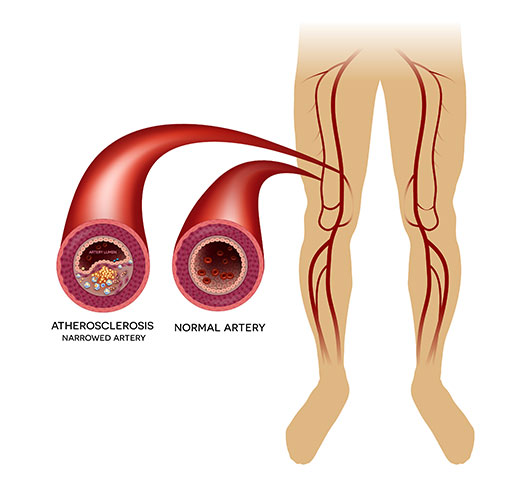-
Products
-
- Featured Products
- Supraflex Cruz
-
- Professionals
- Patients & Caregivers
- Investors
- About SMT
Main navigation
What are the symptoms?
Some individuals with peripheral artery disease may have no symptoms at all. Others may experience pain or muscular cramps in the legs whilst performing a physical activity. It is common for the pain to disappear at rest, this is called claudication. Other symptoms include:
- Pain, heaviness, numbness or fatigue in the leg that does not go away, even at rest
- Wounds in the toes or feet that either heal slowly or do not heal at all
- Gangrene or dead tissue
- A noticeable decrease in temperature in a lower leg limb as compared to other limb or the rest of the body
- Poor growth of nails or hair on the legs
- Erectile dysfunction, especially in diabetic men

1. The non-modifiable risk factors are:
- Age
- Family history of peripheral artery disease
- Cardiovascular disease
- Stroke
2. The modifiable risk factors are:
- Smoking
- Diabetes
- Overweight or obesity
- High cholesterol
- High blood pressure
- Physical inactivity
The first steps towards diagnosing peripheral artery disease is through medical history and physical examination. Other tests that may be performed include:
- Ankle brachial index
- Toe-tip and treadmill exercise tests
- Doppler ultrasound
- MRA (Magnetic Resonance Angiography)
- CTA (Computed Tomographic Angiography)
- Peripheral angiogram
Peripheral artery disease may be treated through lifestyle modifications, medications or surgical procedures if required.
- Lifestyle modifications include:
- Stop smoking
- Controlling diabetes, blood pressure levels and cholesterol levels
- Being physically active for atleast 30 minutes on most days of the week
- Eating a healthy diet low in saturated and transfats
- Medications prescribed include:
- Antiplatelet agents (aspirin and/or clopidigrel) to prevent blood clots
- Cholesterol-lowering medicine (statins)
- Medicines to control high blood pressure
- Minimally invasive surgical procedures:
- Peripheral angioplasty: This a procedure to re-open the blocked artery and restore normal blood flow. A balloon is moved to the site of the blockage, inflated and then removed. If required, a stent may be placed to keep the artery open.


